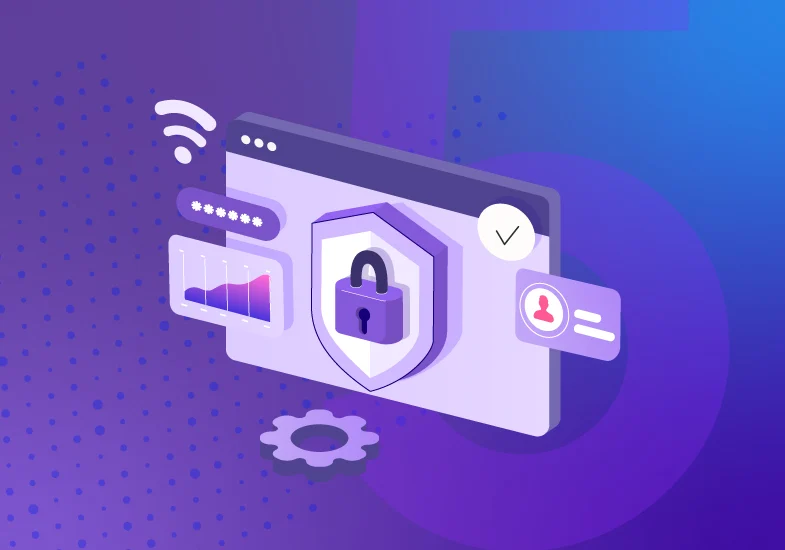What is the Federal Information Security Modernization Act (FISMA)?
What is the Federal Information Security Modernization Act (FISMA)?
In 2002, the US government implemented the Federal Information Security Management Act (FISMA) in order to provide more robust information security among federal agencies. FISMA provides a framework and defines guidelines for federal agencies, including the legislative and executive branches of government, in order to ensure information is appropriately handled and managed. FISMA’s standards and procedures are defined by the National Institute of Standards & Technology (NIST).
FISMA defines “Information Security” as “protecting information and information systems from unauthorized access, use, disclosure, disruption, modification, or destruction in order to provide integrity, confidentiality, and availability.”
FISMA doesn’t just apply to federal agencies, it’s also relevant for state agencies and all government contractors working with agencies. Additionally, The Federal Risk and Authorization Management Program (FedRAMP) was developed as a means to validate cloud-computing services for FISMA compliance.
How to be Compliant with the Federal Information Security Modernization Act (FISMA)
The National Institute of Standards and Technology has developed a risk management framework for achieving FISMA compliance. The FISMA guidelines for compliance are outlined in NIST 800-53, NIST 800-171, FIPS 199, and FIPS 200. For the sake of simplicity, we’ll summarize the steps organizations must take to achieve FISMA compliance.
1. Create and maintain an information security inventory
Agencies must maintain documentation that outlines all networks, their connections, security perimeters, and integrations. The documentation should provide an at-a-glance view of the current network infrastructure. This documentation is used when performing risk assessments.
2. Categorize risks based on agency-specific NIST standards
Once you have detailed documentation of your information systems, these systems need to be categorized per the standards set out in FIPS 199. The goal is to achieve the highest level of security for the overall system. The categorizations serve to highlight the level of risk present in each system element.
3. Maintain and regularly update a security plan
The system security plan outlines all security processes, procedures, controls, and policies, providing a guide for different security actions that may take place. This document should be updated regularly in response to changes in the systems and security landscape.
4. Implement security controls
There are 20 security areas with numerous controls relevant organizations must implement per NIST 800-53. These controls aim to provide a consistent level of security across all federal agencies and systems.
5. Conduct risk assessments
Any time there’s a change in systems, a risk assessment plan needs to be used to analyze and identify any change in potential vulnerabilities and risks.
6. Conduct yearly security reviews
Relevant organizations need to conduct yearly security reviews to prove their FISMA compliance, upon which they’ll receive certification and accreditation.
Consequences of Non-Compliance with the Federal Information Security Modernization Act (FISMA)
Federal organizations protect the world’s most sensitive data. As such they have complex and strict compliance requirements (TIC 3.0, FedRAMP, NIST, FISMA, CMMC). Enhanced security programs need to consider foreign attackers, nefarious hackers, and current events that shift the security landscape. There are attackers seeking information (such as stealing intelligence data and intellectual property of critical systems), and those focused on disabling critical infrastructure to weaken agencies. It’s worth the investment to update security, as the tools, technologies, and tactics of potential attackers are progressing just as quickly as security standards. Government organizations and contractors need to prepare systems not just for today, but for emerging threats tomorrow as well.
Access management was already complicated, but today’s realities make it even more so. Federal agencies’ current processes for managing access are prone to human error, and take up a lot of time. Government entities struggle with efficient pathways for credentials and access, and lingering permissions continue to be a cause for concern. Now, as remote work becomes a key part of daily life for many, security requirements are developing further layers and complexity.
Given the nature of the sensitive data managed by government agencies and their agencies, the risk of non-compliance with FISMA cannot be understated. Beyond the typical financial impact of security breaches, if government data is compromised this may have far-reaching political and national security consequences.
Penalties for non-compliance include a potential censure by congress, reduction in federal funding, and reputational damage that can be detrimental to organizations.
Saviynt & Federal Information Security Modernization Act (FISMA)
Supported by tools and applications in the cloud, identity solutions like Saviynt are the cornerstone of a modern, secure IT environment. They consider all access levels, from employees to vendors, strip down restrictions to the bare essentials, and drastically cut the time spent managing access requests. Saviynt is designed to assume breach, protecting assets and information even after attackers gain access to the system.
Make Identity Solutions the Backbone of Your Security Strategy
Modern identity solutions can help the government manage access and implement existing compliance needs while quickly adapting to new regulations and mandates. Identity forms the baseline of a Zero Trust architecture, which has a “default-deny” state. Through zero standing privilege, Saviynt implements the principle of least privilege in a manner consistent with the Biden order guaranteeing that extraneous access is removed.
Zero Trust architecture helps organizations start with the assumption that all access – including internal “trusted” access – should be verified. Systems attempting to connect should be restricted from the very first step, even disallowed from presenting their credentials to one another. A modern identity solution can streamline processes, making managing access more efficient, more secure, and much less time-consuming.
Saviynt’s Identity Cloud
Saviynt’s Identity Cloud is built in the cloud for the cloud and is the only FedRAMP-authorized SaaS solution for Identity Governance and Administration (IGA) and Cloud Privileged Access Management (CPAM).
The fundamentals of IGA align closely with the requirements outlined in Federal Identity Credential and Access Management (FICAM). Saviynt Identity Cloud is a modular, converged cloud platform developed entirely in-house using a single code base without bolted-on solutions from third-party acquisitions to complicate the implementation process. Each solution can operate independently, allowing customers to select the product that suits them – and integrate Identity Cloud with existing solutions.
Saviynt Identity Cloud includes the following solutions:
Identity Governance and Administration (IGA)
- Ensures that users have seamless access and your organization is in continuous compliance
- Increases organizational efficiency and agility through automation and intuitive identity workflows
- Drives frictionless access and user experience powered by a comprehensive identity warehouse
- Enables Zero Trust in your hybrid and multi-cloud environment
Cloud Privileged Access Management (CPAM)
- Provides complete privileged access protection to support ongoing business transformation and scale as your business needs evolve
- Grants visibility and governance for every identity across your entire environment to improve your security posture and maintain compliance
- Delivers value on day one with fast deployment and ease of management
- Limits users’ actions in the end systems, and provides session recording and an auditable record of the activities executed
Application Access Governance (AAG)
- Protects sensitive application access and satisfies governance, risk, and compliance (GRC) requirements
- Provides capabilities in Separation of Duty (SoD) analysis, emergency access management, role engineering and management, compliant provisioning, and access certification
Data Access Governance (DAG)
- Discovers, analyzes, and protects sensitive structured and unstructured data – regardless of whether your IT ecosystem is on-premise, hybrid, or cloud-based
Third-Party Access Governance (TPAG)
- Securely manages third parties throughout the engagement lifecycle
- Shepherds the account from inception through access management, periodic reviews, and eventual decommissioning via internal and external sponsors
Resources

Modern Identity Governance & Administration for Mid-sized Organizations

